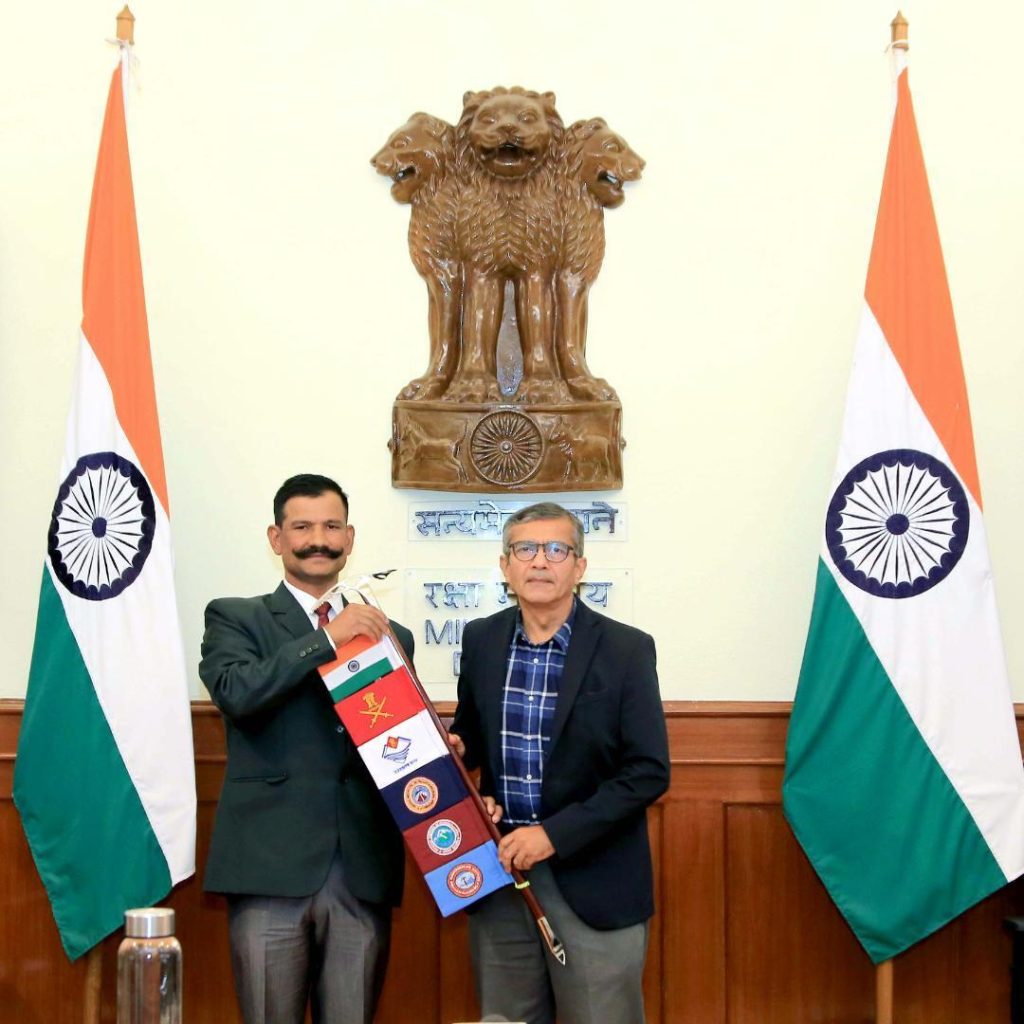
India Flags-in Mount Everest & Kilimanjaro Expeditions: A Testament to the Country’s Mountaineering Excellence
On July 17, 2025, Defence Secretary Rajesh Kumar Singh flagged off mountaineering expeditions to Mount Everest and Kilimanjaro, marking a significant milestone in India’s mountaineering history. The Everest mission was a special one, as it commemorated the 60th anniversary of the Nehru Institute of Mountaineering (NIM), one of the oldest and most renowned mountaineering institutions in the country. The Kilimanjaro team, on the other hand, featured a remarkable climber, Uday Kumar, who is a Divyangjan (a person with physical disability).
The expeditions, which were led by experienced mountaineers and supported by a team of trained professionals, aimed to showcase India’s mountaineering excellence and adventure leadership across land, sea, and air. The events were a testament to the country’s growing reputation as a hub for adventure tourism and mountaineering.
The Mount Everest Expedition
The Everest mission was a prestigious one, as it marked the 60th anniversary of the Nehru Institute of Mountaineering. The team, led by renowned mountaineer, Col. Dhan Singh, included 12 members, including experienced climbers, instructors, and support staff. The team was tasked with summiting the world’s highest peak, Mount Everest, via the traditional South Col route.
The team’s journey began on July 15, 2025, when they set off from the Base Camp at an altitude of 5,364 meters. Over the next few days, they acclimatized to the high altitude, conducting rigorous physical and mental training to prepare themselves for the challenging climb ahead.
On July 22, 2025, the team set off from Camp IV at an altitude of 7,906 meters to make the final ascent to the summit. The climb was grueling, with steep inclines, treacherous ice walls, and unpredictable weather conditions. However, the team persevered, drawing on their years of experience and training to overcome the challenges.
Finally, on July 24, 2025, the team reached the summit of Mount Everest, where they planted the Indian flag and took in the breathtaking views of the surrounding landscape. The successful summit marked a significant milestone in the history of Indian mountaineering, and the team returned to the Base Camp on July 26, 2025, after a grueling but triumphant climb.
The Kilimanjaro Expedition
The Kilimanjaro expedition, led by mountaineer, Major Vikram Singh, featured a team of six members, including Uday Kumar, a Divyangjan climber. The team set off from the Base Camp at an altitude of 1,850 meters on July 20, 2025, and began their ascent to the summit of Kilimanjaro, Africa’s highest peak.
The climb was a challenging one, with steep inclines, dense forests, and unpredictable weather conditions. However, the team persevered, drawing on their experience and training to overcome the challenges. On July 25, 2025, the team reached the summit of Kilimanjaro, where they planted the Indian flag and took in the breathtaking views of the surrounding landscape.
Uday Kumar’s achievement was particularly remarkable, as he overcame significant physical challenges to reach the summit. His determination and courage inspired the team and served as a testament to the power of human spirit.
Conclusion
The Mount Everest and Kilimanjaro expeditions marked a significant milestone in India’s mountaineering history, showcasing the country’s mountaineering excellence and adventure leadership across land, sea, and air. The expeditions were a testament to the country’s growing reputation as a hub for adventure tourism and mountaineering.
The successful summit of Mount Everest and Kilimanjaro marked a significant achievement for the teams involved, and their stories will inspire generations to come. The expeditions were a reminder of the importance of adventure and the human spirit, and they serve as a testament to the power of determination and perseverance.
Source:
https://www.refersms.com/mount-everest-kilimanjaro-expeditions/






